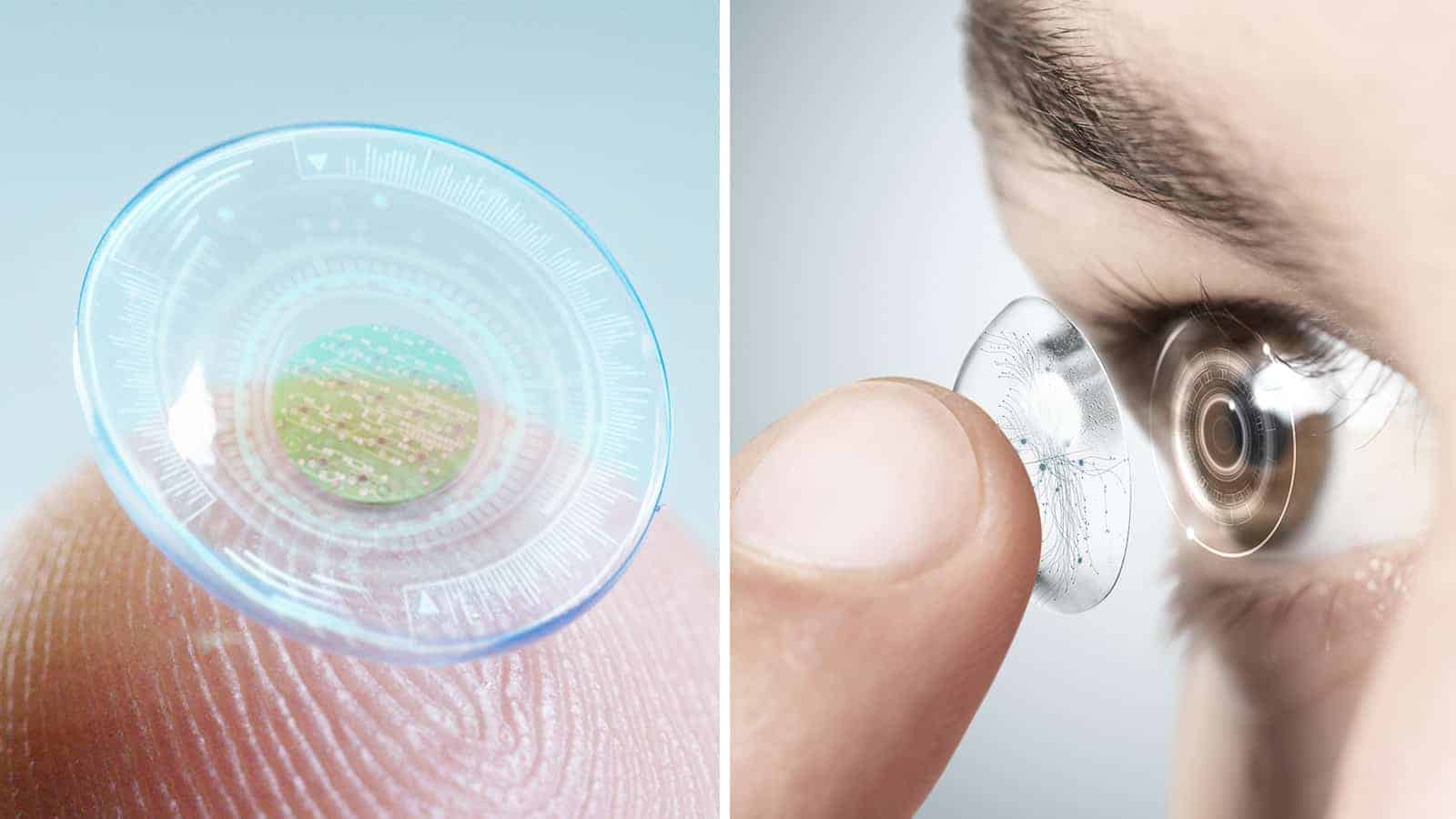What if I told you that contact lenses could sense and treat diabetes? If you’re a contact lens wearer or someone with diabetes, you’ll probably quickly dismiss the idea. Despite how insane that notion sounds, now it’s true. Researchers have recently developed this technology.
Wait before you start to celebrate. It’s new and preliminary; they aren’t available to the general public yet. Researchers at Pohang University of Science and Technology (POSTECH) successfully developed this “smart contact lens” technology. Indeed, they plan on clinical trials soon. You may not be able to get a pair of these contact lenses for a while. But the fact that these researchers have had success with this wild idea is extremely exciting.
The Team from POSTECH
Professor Sei Kwang Han, MSE, led the team. Other team members included Professor Jae-Yoon Sim, MS, Ph.D., and graduate students Jahyun Koo, Do Hee Keum, and Su-Kyoung Kim. The team included members from two departments of the university: the Department of Materials Science and Engineering and the Department of Electronics and Electrical Engineering. The August 2020 edition of the Science Advances journal published the findings.
 Details of the Research
Details of the Research
There has been a recent explosion in the research and development of soft bioelectronics for use in the health care industry. Researchers like the team from POSTECH have been working to exploit the polymer properties of these soft electronics to create wearable health technology. In fact, many of these ventures have already been successful. We see similar technology in fields such as electrocardiograph, pulse oximetry, photoplethysmography, and even glucose monitoring.
In fact, glucose monitoring is the basis of this research from the team at POSTECH. They have successfully developed wireless smart lenses that can diagnose and treat diabetes – diabetic retinopathy in particular. It’s a revolutionary technology that could have a major positive impact on diabetics.
How the Lenses Work
You’ll probably find the engineering behind the lenses a tad complicated. You may need a background in engineering to understand all the terms and processes that the team described in their publication. However, in this article, the information we summarized and translated the words into more rudimentary terms.
The lenses contain five parts:
- Remote radio frequency (RF) communication system
- An electrochemical biosensor that detects glucose levels in real-time
- On-demand flexible drug delivery system (f-DDS)
- A resonant inductive wireless energy transfer system
- Integrated circuit (IC)–based microcontroller chip with a power management unit (PMU)
Remotely Controlling and Powering the Lenses
The contact lenses work via remote control using the first part. This RF technology isn’t new. Indeed, you find the same technology in current remote controls. However, applying this to contact lenses is new.
The remote communication unit (RCU) built into the lenses only uses 2.3 mW of power. It transmits data at a rate of 445 kbits·s−1 in the 433-MHz industry-science-medical (ISM) frequency band. This is a great frequency band to use on a global scale, especially since Europe bans the 900-MHz that is allowed in the United States.
The fourth part, the resonant inductive wireless energy transfer system, is how the lenses and the RCU receive power. The lenses have a copper receiving coil built into them. There is an external power source that has a copper transmitter that wirelessly delivers power to the lenses.
Sensing Glucose Levels
The ocular electrochemical biosensor, the second part, allows glucose levels to be measured through tears rather than blood. This replaces the need for traditional lancets, strips, glucose monitors, and finger pricks. While tears aren’t normally used for glucose level measurement, researchers looked into the efficiency of measuring these levels in tears. It was found that glucose levels in tears strongly correlate with the levels found in the blood.
The biosensor contains three electrodes – two made from platinum and one made from silver/silver chloride, which detects the electrochemical glucose reaction. A layer of chromium was also added as an adhesive layer. Finally, a mixture of glucose oxidase (GOx), bovine serum albumin (BSA), poly(vinyl alcohol) (PVA), and chitosan was added to one of the sensors along with a layer of glutaraldehyde after the initial mixture had dried. This was tested on diabetic rabbits, and the results were that the measured glucose levels in tears were as accurate as of the blood levels.
 Delivering Treatment
Delivering Treatment
When glucose levels are high, the lenses have a built-in drug delivery system, the third part, that can treat diabetic retinopathy through remote commands. The engineering behind the system is amazing and slightly complicated. Here is a basic overview of it.
The system measures 1.5mm by 3mm by .13mm. In other words, it’s thin, and the wearer won’t feel it at all when they wear the contact lenses. As a comparison, typical contact lenses measure from 0.04-0.09 mm. That makes the delivery system only slightly thicker than typical lenses, or around the same thickness as hard lenses or toric lenses.
The medicine is implanted in the lens as exfoliation layers and then covered with a gold anode electrode. When a built-in excimer laser remotely activates, it essentially melts the gold layer and one of the exfoliation layers. The medicine then flows into the eye.
After about 40 seconds, the gold then solidifies, blocking medicine flow until the next laser blast. Engineers designed this system to be defect-free and, during trials, they tested this gold-melting laser process 1,000 times. Each time yielded perfect results.
Putting All the Parts Together
All the parts worked perfectly independently, but each had to fit together to make a whole, finished product. That’s where the fifth part came in.
The published research didn’t make a lot of reference to the microcontroller chip. However, it is essentially the CPU of the whole system. It functions just like the microchip in your computer – without it, you just have many fancy electronics that do nothing on their own.
Reading the Data
The CPU of the lens was designed to transmit data to a custom-made amplitude shift keying (ASK) receiver module (receives data via the amplitude of the electronic), an Alf Vergard Risc (AVR) (a microprocessor that is up to four times faster than traditional microprocessors), and a computer. Naturally, if the contact lenses pass the clinical trials and make it to the consumer market, data would eventually transmit in a less “engineer-like” way. The assumption would be through an app so people can monitor their levels from their smart devices.
Researchers experimented on diabetic rabbits, as mentioned before. The rabbits remained unharmed, and the results were widely positive. In other words, the lenses worked. The team says that there will need to be minor adjustments in the clinical phases. But overall, the technology yielded outstanding results.
Disease-Monitoring Lenses on the Market
There have been other ocular lenses for disease monitoring developed already. The United States Food and Drug Administration (FDA) already approved similar technology. An example is Google Lens. This lens stalled in clinical trials because they could not get the glucose-level readings from tears to match those of glucose-level readings in blood.
Another example is the Triggerfish Lens. This lens monitors changes in changes in intraocular pressure for the detection of glaucoma-related issues. However, it doesn’t produce real-time changes and doesn’t offer a drug-delivery system like the POSTECH team’s lenses.
Although these lenses are phenomenal advances in medicine, the lenses from the POSTECH team will quickly make this yesterday’s news. The fact that they can monitor diabetic retinopathy in real-time makes them more useful than the others.
What is Diabetic Retinopathy?
This section is for people who aren’t familiar with this condition. Damaged blood vessels in the retina (in the back of the eye) are a common complication of diabetes. Symptoms include seeing floaters, blurred vision, seeing dark spots or areas, and even going blind.
This eye disease occurs pretty rarely when you compare it to the number of people with diabetes. However, once a person develops the condition, there is no cure. People can manage the disease by keeping glucose levels under control. If the condition is really bad, the doctor might suggest laser surgery.
 Final Thoughts on the Research and Diabetic Contact Lenses
Final Thoughts on the Research and Diabetic Contact Lenses
With the number of people suffering from diabetes in the world, the development of lenses that can track, monitor, and treat the condition is an anxiously awaited concept. Even if the lenses are only for diabetic retinopathy rather than the entire condition itself, any help is better than what’s available now.
Of course, diabetes is a condition that one must address immediately. This undertaking starts with access to healthier food options and better healthcare. Some people may not be able to help that they have diabetes. But for some people, it’s a self-inflicted condition. Until society can get a handle on the diabetes epidemic, new technology like these lenses from the researchers and scientists at POSTECH will be a valuable addition to the world.

















